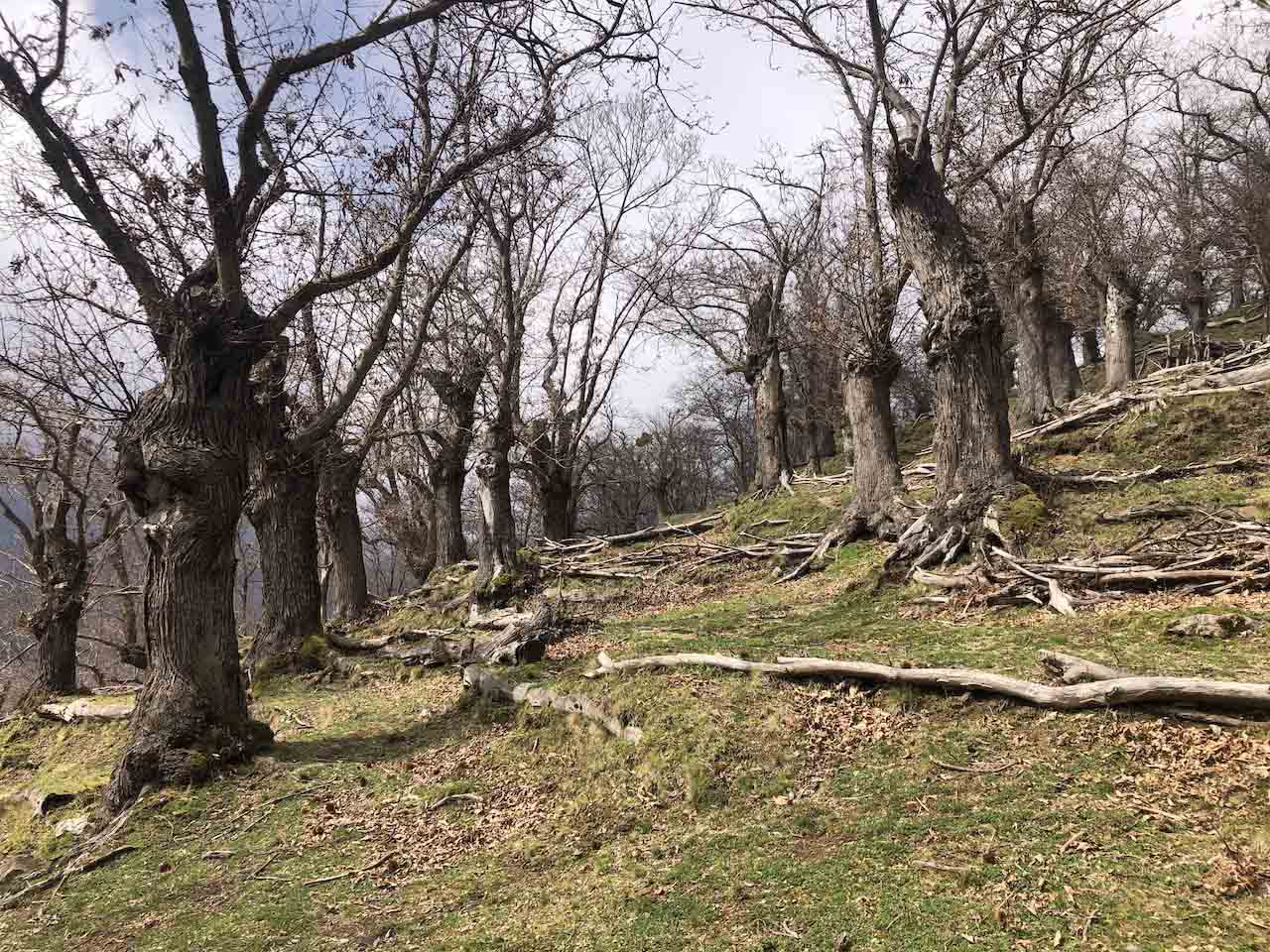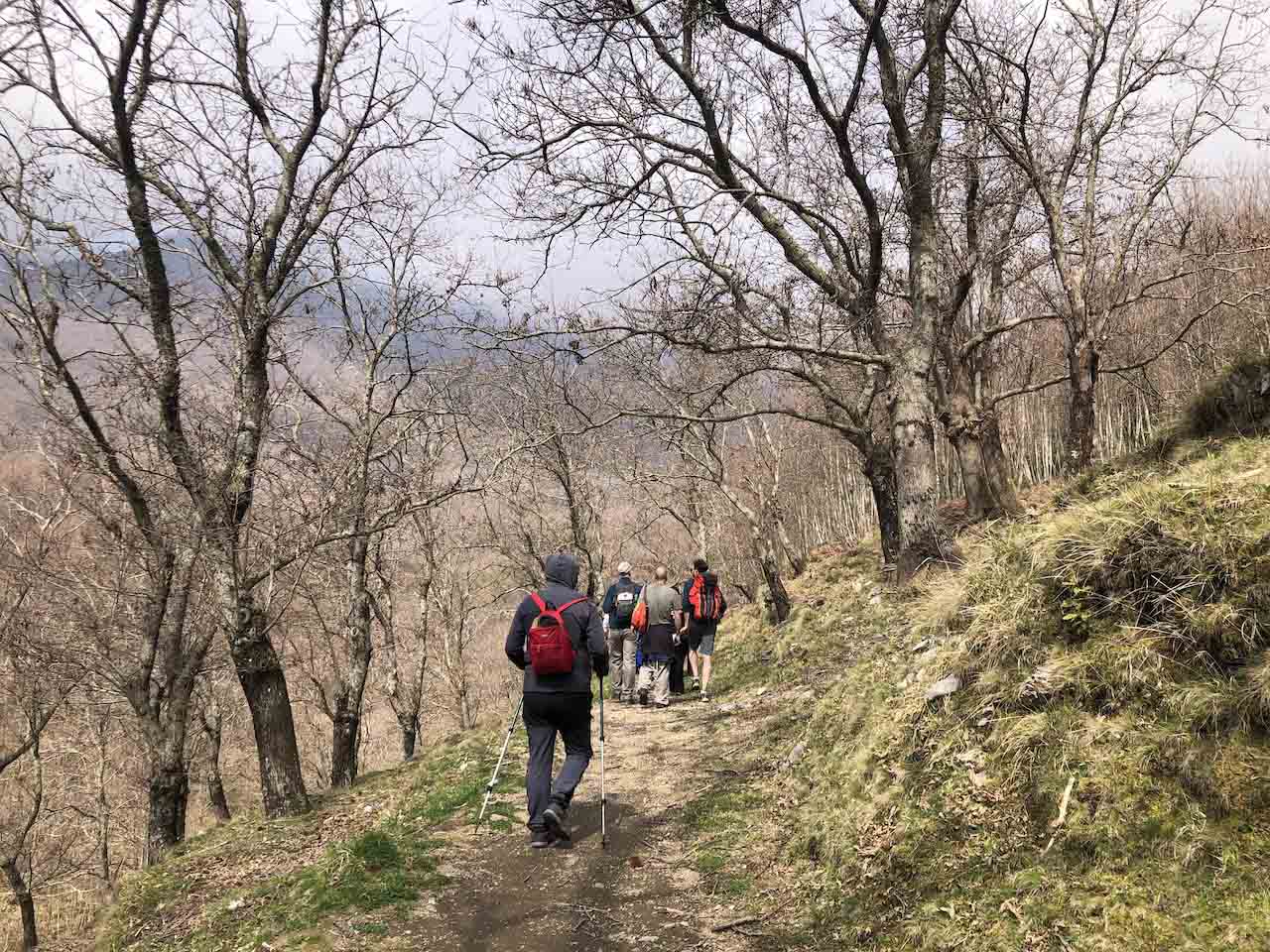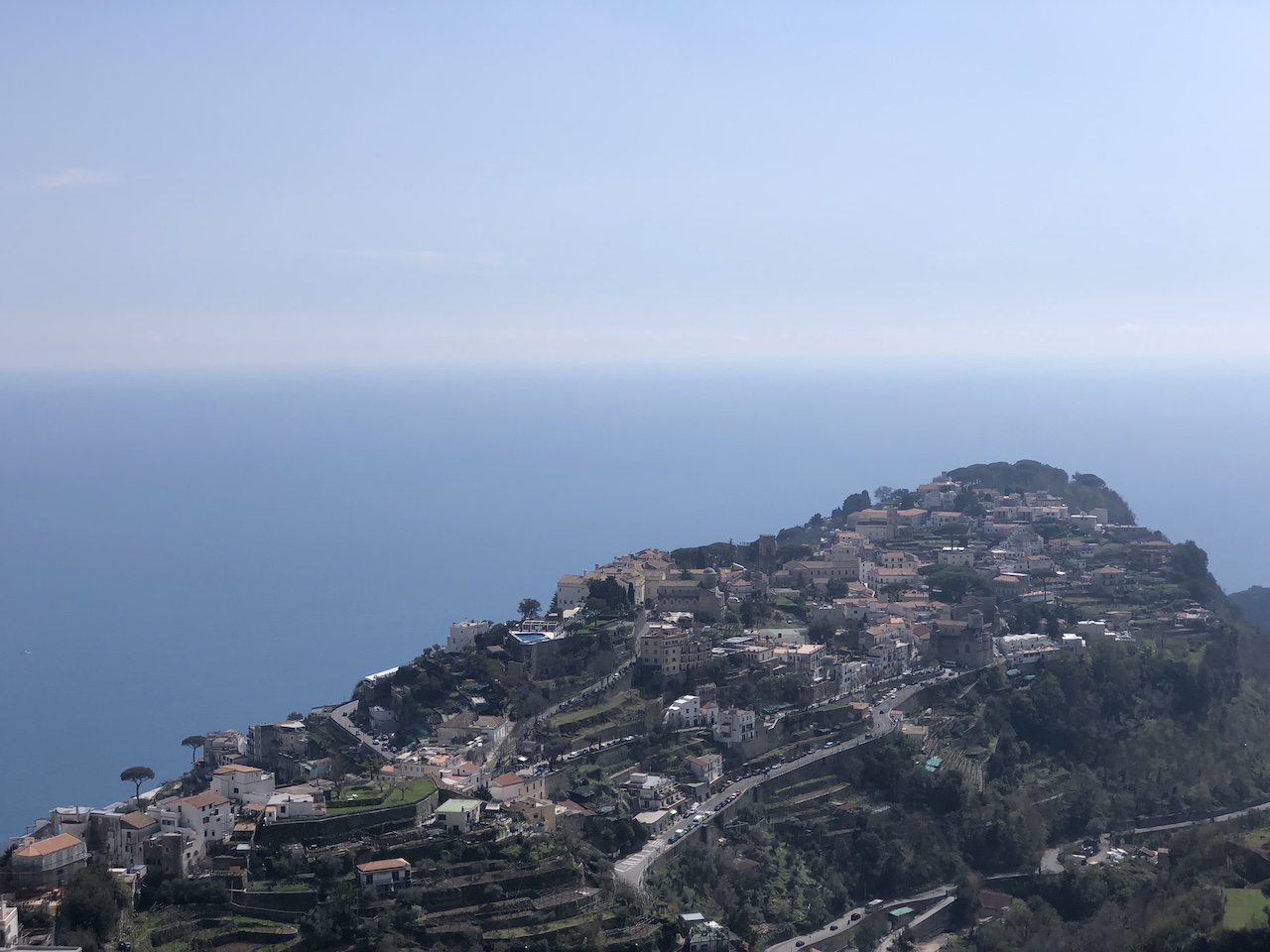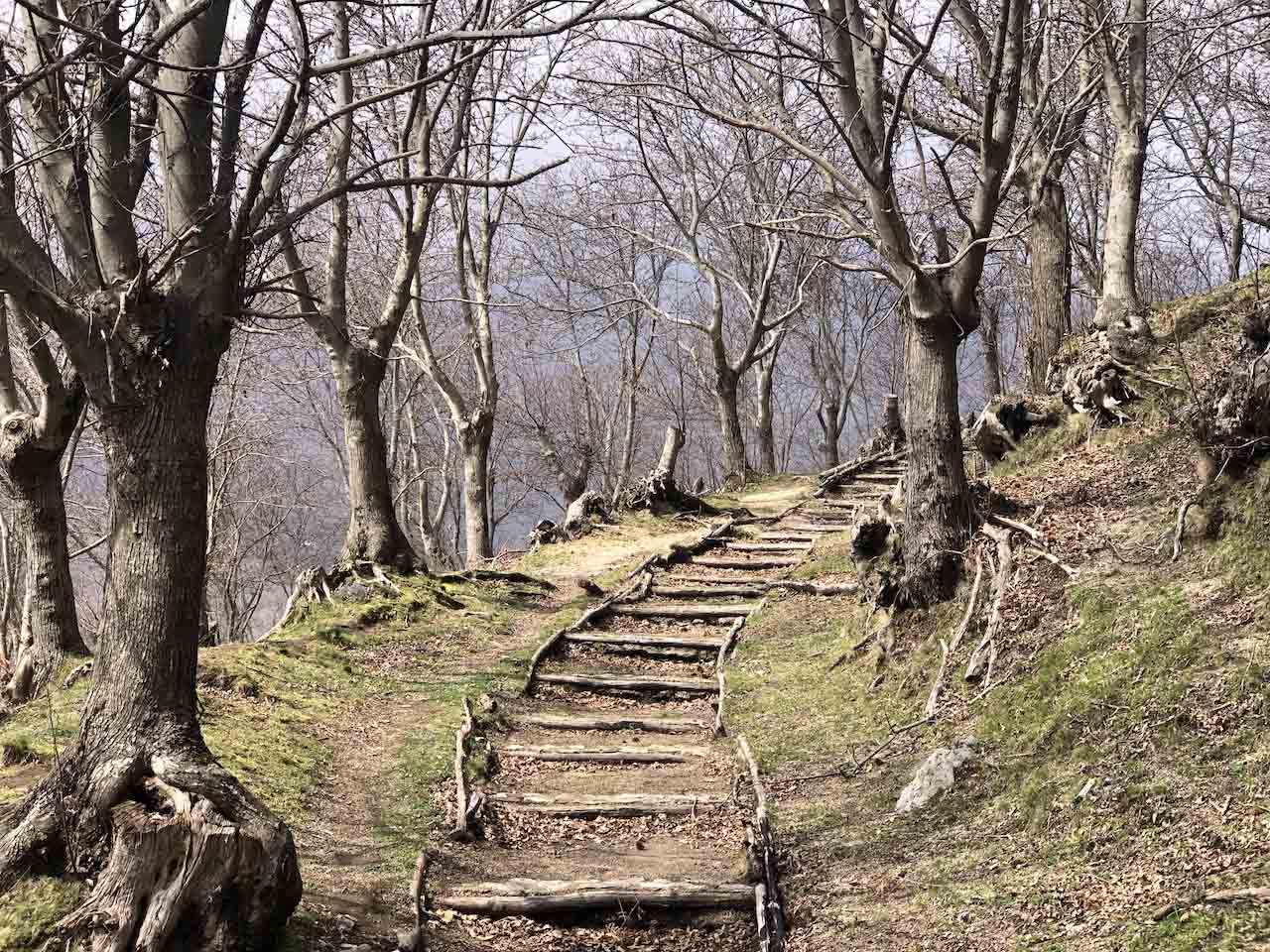It is one of 10 itineraries that make up the Ravello Digital Grand Tour, a hiking project dedicated to the great travelers, artists, and intellectuals of the 20th century who stayed in the town
30th March 2023, text and photo by Anna Volpicelli
One retraces the steps and touches with one’s hand and feet the footprints that E.M. Forster, a famous English writer, left on the earth that outlines the path that leads from Ravello to Fontana Carosa.
The trail is part of the already announced Ravello Digital Grand Tour, a project that includes ten routes and a digital map dedicated to illustrious artists and intellectuals, including Gide, Wagner, Neville Reid, and Escher, who found during their stay in the city of music, the creative sap to make and compose their works.
“We have magical places and sights, but we often don’t know about their existence probably because they are not highlighted correctly. Hence the idea to create a project in the first place to reappropriate our paths, deepening their knowledge, rediscovery, enhancement of new ones and above all the enjoyment of them and likewise offer them to the many tourists who populate our places,” explains Paolo Vuilleumier, mayor of Ravello.
An unexpected refuge
That of E.M. Forster – Fontana Carosa follows the events of Eustace, the young protagonist of “The Story of a Panic,” a youthful tale the British author wrote inspired by the landscapes surrounding Ravello. In fact, in 1902, Forster took refuge in the village with his mother after passing through Naples, Paestum, and Amalfi.
A luminary man of culture of the last century, Forster was part of that group of English artists and intellectuals known as the Bloomsbury Group, a kind of revolutionary collective to which the writer Virginia Woolf also belonged, who, together with her allies found in Ravello one of the venues of the famous and confidential meetings.
“The trajectories launched by the Grand Tour and the great travelers of the twentieth century were the inspiring principle for creating the various itineraries. Ten short trips of varying difficulty that will lead the hiker to discover unusual, almost secret aspects of our town, between the sea and the mountains, crossing chestnut groves, and lemon groves, encountering churches, ancient medieval remains, and rural architecture, immersing themselves in breathtaking landscapes, following the steps of these illustrious guests of ours, until arriving at the well-known places, with Villa Rufolo and Villa Cimbrone,” Paola Mansi, council member of the municipality of Ravello, tells us.

A contemplative dream
During his stay in Ravello in the early 1900s, it is said that every morning Forster would leave his house for a walk in the chestnut forest just beyond the town, and from here, he would go, as if in a contemplative dream, to the Fountain. A place, according to the author, that is full of charm and magic, which prompted him to write the story that was later published in 1913 in the collection The Celestial Omnibus and Other Stories.
From mundane to rural life
Following Forster’s real-life imagery, it is as if, step by step, one feels the presence of that young Eustace who found refreshment in those valleys. The trail starts from Piazza Fontana, and after passing the village’s narrow streets, we enter the heart of mother nature. We leave, then, the mundane life behind to welcome and be welcomed by the arms of what was once the belly of Ravello’s economy: agriculture. Herds of cattle and expanses of chestnut trees branded, and still do the whole area with a firm fist.
A valley of chestnut groves
The trail winds through the Valle del Dragone, a valley named after its river that flows from the top of the Monti Lattari to Atrani, which in this stretch separates the village of Scala from that of Ravello. From high to low, expanses of ancient trees paint the landscape.
“The fruit chestnut trees,” Marco Marotta, Cartotrekking‘s hiking guide, tells us, “are recognizable because they are marked. The others, however, comprise the poles used to cultivate Sfusato Amalfitano“.
Remnants of ruins, known as Calcara, ancient stone structures used for the baking of lime, punctuate the path, awakening distant imaginaries in the memory of passersby, which like small cells, are stored in the memories of a collective historical narrative to which we all belong.

Water creative source
Climbing up the path, resting your feet on those rock stairs built by local volunteers, who together with the Cartotrekking team, participated in the restoration and cleaning of the way, currently a candidate as a CAI trail, we arrive at the Carosa Fountain: a rural structure surrounded by leaves and trees from which pure water flows.
Closing our eyes, it is as if one senses the spirit of Eustace and, consequently, that of Forster, who was so captivated by this place that words flowed swiftly and fluidly on the notebook like the gushes of that same water.
A place of pilgrimage
In front of the Fountain, a votive chapel encloses a statue of Our Lady. It is also a place of pilgrimage dear to the people of Scalese, who come here to pay homage to the Holy Figure. From this point, the way back begins. The trail is an easy loop circuit that starts from the urban center and then returns to the same spot with a surprise.

The return to the city
Going backward, one passes through a different route, leading right into the valley’s heart. A road dotted with flat stretches, some a bit more uphill, others downhill, and stairs at the end is a glazed ceramic tile of a different color, depending on the route.
In this passage, the typical vegetation of the valley comes closer and offers itself in its lush splendor to the open and attentive gaze. The chestnut trees and the green of the mountains gradually give way to the endless panorama typical of the Amalfi Coast. Before returning to town life, the eyes are lost in the cobalt horizon of the Gulf of Salerno, where Ravello is admired for its enthralling charm from the top of the path.

